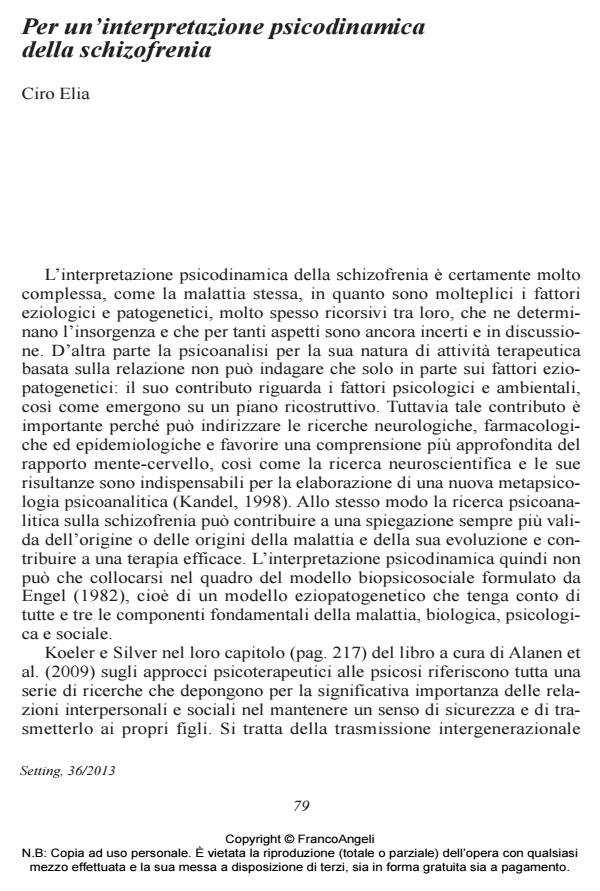Per un’interpretazione psicodinamica della schizofrenia
Journal title SETTING
Author/s Ciro Elia
Publishing Year 2015 Issue 2013/36
Language Italian Pages 11 P. 79-89 File size 107 KB
DOI 10.3280/SET2013-036002
DOI is like a bar code for intellectual property: to have more infomation
click here
Below, you can see the article first page
If you want to buy this article in PDF format, you can do it, following the instructions to buy download credits

FrancoAngeli is member of Publishers International Linking Association, Inc (PILA), a not-for-profit association which run the CrossRef service enabling links to and from online scholarly content.
The article points out a contribution to the psychoanalytic interpretation of schizophrenia, particularly about its various ethiological and pathogenetic factors, that psychoanalysis can question only partially, regarding its contribution the psychological and environmental factors like emerging at a re-construction level. Neverthless, that contribution is important in order to address neurological, pharmacological and epidemiological research and to accomplish a deeper under standing of mind-brain relationship, as well as neuroscientific research and its results are needful for achieving a new psychoanalytic metapsychology. The model wich the author refers to is the Self sistemic-processual psychoanalytic model (Elia, 1999), based on the integration of the first Freud’s topic reformulated by Bucci’s Multiple Code Theory (1997), with the structural theory (Ego, Id, Super-ego, Ideal Egosub-systems).
Ciro Elia, Per un’interpretazione psicodinamica della schizofrenia in "SETTING" 36/2013, pp 79-89, DOI: 10.3280/SET2013-036002